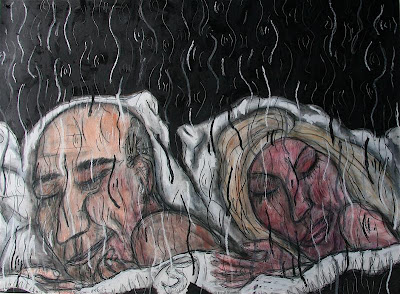How Dose That Lump Get On To Your Breast And Where Dose That Tumor Come From
Washington DC ( AP) Less than a Week from President Obama 2013 Inauguration It is Rumored that a breast cancer cure is going to take place before the end of the 2nd Term of President Obama: What A Great Legacy that would be. To honor the Inauguration Barron's Medical Journal Interviewed Rose Conrad M.D., Ph.D. The CEO of
Gennxeix Biotech Inc and ask the question: How dose that lump get on to your breast and where dose that lump come from ? Conrad responded with a smile on her face and said let's open up the breast cancer playbook. Oncogene are genes that take your genes and DNA and convert the your genes to breast cancer genes. The most known gene associated with breast cancer is the KCNK9 Gene. KCNK9 encodes a potassium channel that allows the breast cancer tumor to grow on your breast. This process is aided by Hypoxia. Hypoxia refers to an inadequate oxygen supply to the cells and tissues of the Breast.Brought To You By: Zoya Tommy Contemporary Art Gallery: is pleased to announce the opening of Horizontal by Frank X Tolbert2 on January 26, 2013 at 6:00pm. The show will run through February 23, 2013
The Main Gene that stops the growth of KCNK9 Genes is gene is p53. p53 is a fundamental determinant of cancer susceptibility, p53 integrates stress signals and elicits apoplectic responses that maintain genomic stability. When cells sense a decrease in oxygen availability (hypoxia), they develop adaptive responses in order to sustain this condition and survive. If hypoxia lasts too long or is too severe, the cells eventually die. Hypoxia is also known to modulate the p53 pathway, in a manner dependent or not of HIF-1 (hypoxia-inducible factor-1), the main transcription factor activated by hypoxia. The p53 protein is a transcription factor, which is rapidly stabilized by cellular stresses and which has a major role in the cell responses to these stresses. This process is why it is important Conrad says for people that are first degree relatives of breast cancer patients, must take
a genomic test to see if they are the carrier of gene KCNK9. By identifying this gene we can direct patients with the correct advise as to deal with the fact that they have a lunp on the breast to they are going to get a lump on their breast. Often what happens is that a breast cancer patients dose not go to the doctor or take important test to see if there is a lump on the breast. what happens is the spread of breast cancer is responsible for more than 90 percent of breast cancer deaths. The process by which breast cancer spreads -- or metastasizes is where Metastasis was long thought as a late event in breast cancer progression, With Genomics we now shown metastasis to be an early event that is dependent on Hypoxia HIF-1. HIF-1 protein controls genes that enable cells to survive in low oxygen, like cells in solid breast tumors. In order for breast cancer cells to spread to lungs, they must leave the breast,enter blood vessels that lead to the lungs, and exit those same vessels. " Blood vessels are pretty tight; a cell has to work pretty hard to get through the vessel wall. How this process works is breast cancer cells turn on genes called ANGPTL4, ANGPTL4, helps breast cancer to travel through blood vessel walls. Research is now being performed with Genomics. The Gennxeix Biotech Team found by injecting these cells either with normal or "knocked-down" levels of ANGPTL4 into mice and examining their lungs. Cells lacking HIF-1 and containing extra ANGPTL4 were better able to invade the lungs than cells without extra ANGPTL4. There are other genes that are involved in the creation of a breast cancer tumor on the breast. Her-2, p63, 73. Conrad goes on to say that in their genomic test uses 21 different genes to project ,stop the growth and the spread of a patients breast cancer Lump. HIF-1 as a therapeutic target can extend the life of many stage four breast Cancer patients. Gennxeix discovered The tumor suppressors VHL (von Hippel-Lindau protein) and p53 target HIF-1α for ubiquitination to inactivation breast cancer tumors cells increases the of HIF-1. This process Increased phosphatidylinositol 3-kinase (PI3K) and AKT. In breast cancer, increased activity of the HER2 (also known as neu) receptor tyrosine kinase is associated with increased tumor grade, chemotherapy resistance, and decreased patient survival. HER2 has also been implicated as an inducer of VEGF expression. GenNXeix demonstrate that HER2 signaling induced by over expression in mouse 3T3 cells or human MCF-7 breast cancer cells results in increased HIF-1α protein and VEGF mRNA expression that is dependent upon activity of PI3K, AKT (also known as protein kinase B), and the downstream kinase FRAP (KBPS-rapamycin-associated protein) Gennxeix concern with patients with diabetes and breast cancer may not receive full Benefit of HIF-1. All women having access to a physician can have access to HIF-1 treatments




No comments:
Post a Comment